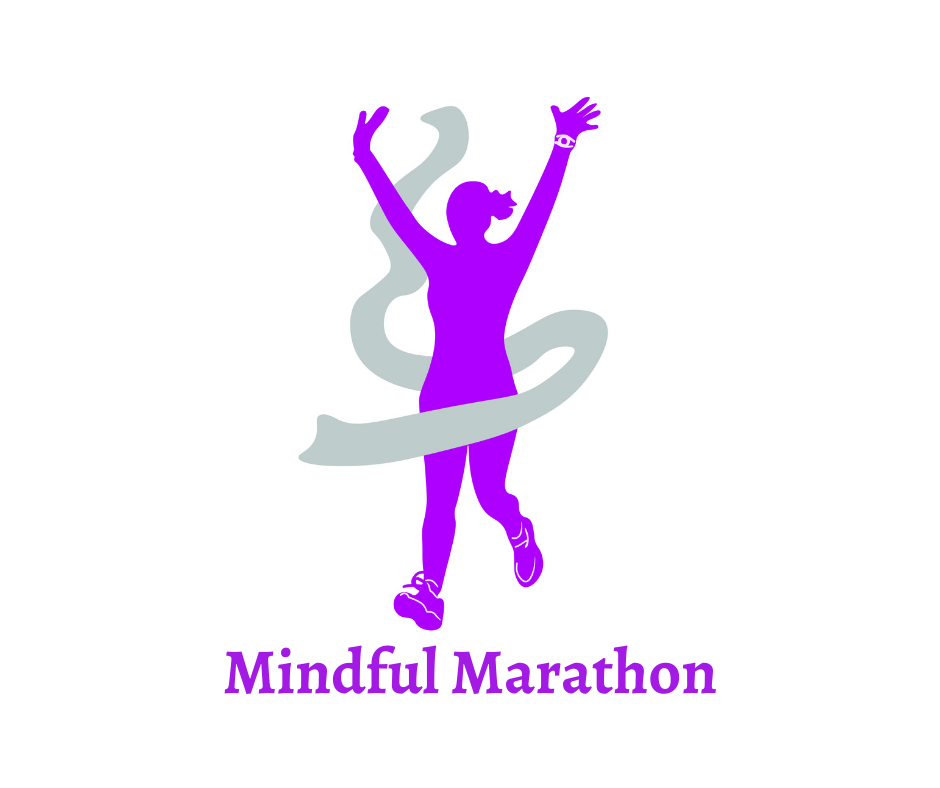Summer Running Guide
Have you found yourself struggling through your run the last few days or weeks because of the heat and humidity out there?
I’ve put together this Summer Running Guide to help us stay as cool as possible while running, to stay safe in the heat, and to stay patient with our running goals as our bodies adapt to running in the heat.
3 Ways Summer Runners Can Stay Cool
1. Dress for running in the summer
Light colors will hold onto less heat. Wicking material is our friend. Moisture wicking fabric (like polyester) will help to get the sweat away from your body.
Cotton holds onto moisture, and you may find yourself soaking wet and feeling rather heavy if running in a cotton t-shirt! Having sweat cling to the body may also lead to issues with chafing which is not fun.
For summer running, I keep a stick of Body Glide handy and use that on areas that commonly chafe for me: the shoulder straps of my sports bra and where my running tank rubs under the armpits. Your areas of chafing will be different from mine, but wicking materials will help the situation for sure!
Consider protecting the face and eyes from the sun with a visor. Don’t forget sunglasses to protect the eyes from UVA and UVB rays! I have a fun pair of goodr sunglasses which are affordable, durable, and stay put on the ears.
2. Avoid the sun as much as possible
It may require a bit more planning than usual, but early morning will be the coolest time of day to get outside for a run. Once the sun is out, I actively try to seek out the shade while running.
Consider taking your run off of the pavement and onto a trail. Not only is a trail likely to have more shade cover, but a trail also lacks pavement which absorbs heat and radiates it back onto us as we run.
Friendly reminder to wear sunscreen! Most people remember the face, but forget the ears and back of the neck (be sure to get the arms and legs too). Love the small sticks of zinc oxide like this one from Aveeno - easy and portable.
3. Hydrate
It is important to get hydrated both before and after the run. During the run, I drink to thirst.
In the summer especially, I like to bring along a handheld water bottle (such as this one from Nathan), so that it is available if needed. Hydration vests are another option! Alternatively, there is the option to plan a route where water fountains are readily available.
How do you know how much water you should be drinking while running?
Sweat rates can vary widely and are different for each individual. Try this exercise:
Weigh yourself before the run, and then again as soon as you get back from running (but before voiding). Let’s say you discover that you are one pound down from before you started the run. This means that you should have taken in an additional 16oz of fluid while on the run.
One pound down is equal to 16oz of fluid that we should have taken in.
Coach Michelle's Berry Best Smoothie
Ingredients:
10oz milk of your choosing
1 ripe banana
½ cup frozen blueberries
½ cup frozen mango chunks
¼ cup old fashioned rolled oats
½ cup unsweetened plain yogurt
1 tbsp unsweetened peanut butter
¾ cup baby spinach (or one big handful)
Pinch of cinnamon and cardamom
Directions:
Place ingredients in blender or Ninja, and blend until smooth.
Recover Well
After a warm and/or humid long run in the summer, make sure to recover well. Remember to hydrate and refuel. I love a post-long run smoothie in the summer! Sharing one of my favorite recipes below!
In addition, I love to reach for my Oofos slides to help recover from running in the summer more quickly. They are super comfortable, cushioned, and absorb more impact than traditional sandals or flip flops. Love their cushion and stability, and the fact that they reduce energy exertion in the ankles. I have one pair that never leaves the house and another pair for outdoors!
Preventing Heat-Related Illness
First, let’s take a moment to note the several amazing ways the body has to cool itself. Most of us are familiar with sweating. As sweat (water) evaporates from the skin, it cools the body, keeping the core temperature in a healthy range.
The body can also lower its temperature by sending more blood to the skin, where it is cooler, to let more heat escape through radiation. If the body can’t get rid of the extra heat, the core temperature rises.
In addition to exercising outdoors on a hot day, humidity can play a large role in leading to heat-related illness. With high humidity, the body can’t use sweat to cool itself.
When the outside temperature rises above 80ºF, or when the relative humidity exceeds 50-60%, we must use caution when deciding to run in these conditions.
Heat-related illnesses are caused by three main factors:
*increased core body temperature
*loss of body fluids
*loss of electrolytes
3 types of heat-related summer running illness
1. Heat Cramps
While running in the summer, we can experience salt losses in our sweat. If the salts are not replenished appropriately, we might experience muscle cramps or spasms. While heavy sweating occurs at this stage, the body temperature does not become elevated.
Experiencing heat cramps indicates that we need to drink water and sports drink to replace the lost salts, and rest in a cool environment.
2- Heat Exhaustion
At this stage, one may experience general weakness, dizziness, lightheadedness, headache, nausea, or vomiting. Rapid heartbeat and fast breathing may occur. The skin is usually cool and pale, though the individual is likely still sweating. Body temperature can be elevated, but remains under 106ºF.
At this point, exercise must be stopped, followed by rest in a cool environment, taking off any extra clothing, ingestion of cool liquids, and cooling the body down with water or ice externally.
3- Heat Stroke
This one is a medical emergency and requires immediate medical attention!
Heat stroke occurs when the body fails to regulate its own temperature. The body temperature continues to rise (over 106ºF), leading to symptoms of mental status changes like confusion, delirium, or unconsciousness. It is associated with dry, warm, red skin, and there can be a reduction or loss of sweat.
It requires immediately stopping exercise, seeking medical attention, and starting to cool the body down with cold water and ice packs externally. Cool liquids may be consumed if the individual is conscious.
Bottom line: we must use caution when running in the heat. The major symptoms to watch out for include cramping, weakness, dizziness, lightheadedness, headache, disorientation, confusion, nausea, vomiting, or cessation of sweating.
If these signs occur, they could be symptoms of heat-related illness as discussed above. If we experience any of these symptoms, we should stop running, get ourselves out of the hot environment, and drink water or sports drink. If we don’t feel better, we should get help.
3 Ways to Embrace Heat Acclimatization
While it may be hard to believe at the moment, running in the summer heat and humidity DOES get easier.
It takes about 2 weeks of consistent running in the heat for the body to adapt.
So what happens during this process?
Heat acclimatization is the body’s ability to adjust to the effects of heat over time. It can be beneficial for our training and help to make us stronger runners, both physically and mentally.
1. Love the sweat
Our body is better able to regulate core temperature, sending blood from the core to the skin where heat dissipates. Blood flow and plasma volume improve.
Our sweat rate increases, and we start to sweat sooner at a lower body temperature, to improve the cooling process. In addition, the content of the sweat changes too, such that it contains less salt.
How cool is sweat?!
2. Focus on level of effort
When first starting to acclimate to summer running, it is important to think about heat and humidity as training stresses.
At first, the body will be working harder, and the heart rate will be increased. Trying to maintain a pace that we previously kept in cooler temperatures ends up making the run harder than planned which can be detrimental to our training.
We want to continue to “keep the easy days easy”.
3. Be patient
Although we may find that we are slowing down significantly in the heat, we must be patient with ourselves.
With acclimation to the heat, the heart rate will begin to return to its lower levels, and our effort levels will adapt as well. Read more about running by effort here.
Instead of running by distance, we can run by total time of the workout instead.
The best part of all of this?
At the first sign of fall weather, we get to thank heat acclimatization for how easy and fast our runs feel after running in the summer heat and humidity!
With that said, let’s remember to use caution while running in the heat and minimize the risk of heat-related illness.
Much of running in the summer is about becoming comfortable with being uncomfortable.
Let’s be safe out there, and have a great summer of running!
References:
Hot Weather Running Tips, RRCA
Exercise-Related Heat Exhaustion, Johns Hopkins Medicine
Disclosure: Some of the links in this post are affiliate links. As an Amazon Associate, and an OOFOS Medical Affiliate, I may earn commissions from qualifying purchases from Amazon.com and Oofos.com. (This means, if you purchase something through one of these links above, I might make 5 cents!)






